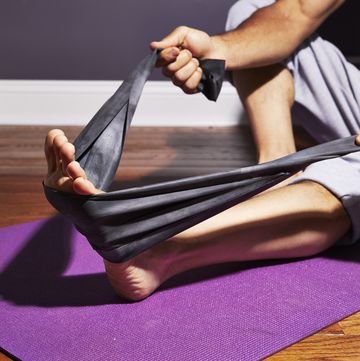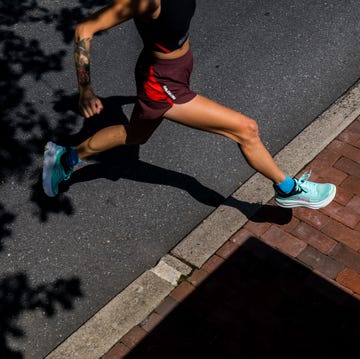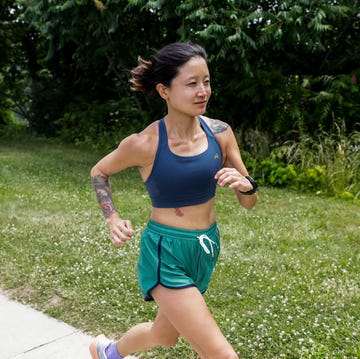The 7 Best Waterproof Backpacks for Any Excursion
Seal the deal with packs, bags, and duffels that protect your gear.

We earn a commission for products purchased through some links in this article. Why Trust Us?
Waterproof backpacks are a unique breed of high-tech utility and functional beauty, and an essential for an adventurous life. From running mountains, to urban commuting, to whitewater rafting, a waterproof pack can quickly become a must-have and relied-on piece of equipment when the weather or environment is gnarly.
For these purposes, the separation between waterproof and water-resistant is cavernous. Yes, water-resistant materials and constructions are great, and in many cases they're just fine for a little bit of weather as they repel water, but a waterproof pack takes it a step further by ensuring the contents of your pack stay fully dry, even if the pack is submerged.
To dive in deeper, waterproof means a pack is impervious to water up to a certain depth. Be sure to check your product's IP rating which measures how deep and how long a product can be underwater—it will vary from product to product and brand to brand.
Whether the water you're seeking to avoid comes from a torrential downpour while running the streets of Seattle, sloshing through puddles in New York City, or snowshoeing in Colorado, these packs are guaranteed to keep your gear dry, including tablets, clothing, and sandwiches.
I scoured the market for the best waterproof backpacks, of which there are many, but choosing the Best Overall had lots of competition, with options stacking up for style, construction, and reliability; while Best Value became a difficult numbers game. Everything from industrial design to functionality under pressure was evaluated. In my final roundup, I am confident there is a water-shedding pack here for every possible scenario from float trips to bodega runs.
Best Waterproof Backpacks
- Best Overall: Mountain Hardwear Scrambler Pack
- Best Lightweight: Exped Stormrunner 15
- Best Budget: Marmot Slate All Day Travel Bag
- Most Heavy Duty: Yeti Panga Pack
- Best for Travel: Chrome Urban Ex 2.0 Rolltop Pack
- Best Design: Ortlieb Velocity Pack
- Best for Day Hiking: Osprey Transporter Pack
The Expert: As a professional gear tester for more than 20 years, I’ve had the opportunity to see some amazing places. I’ve written for and contributed to various publications, including Backpacker, Men’s Health, Gear Junkie, 5280, and Elevation Outdoors. I started running competitively after college where my passion for hiking and climbing morphed into an unusual love for trail running. I’ve ticked off numerous 10Ks and half-marathons over the years, but now I spend more time on mixed surfaces than road so I can take my kids along for the fun. When I’m not in front of the computer, I’m out on the trails and slopes surrounding my home in Colorado. Find me on Instagram @definitelywild.
Features to Look for in a Waterproof Backpack
Waterproof Versus Water-Resistant
First, determine if you need waterproof or water-resistant. There are recommendations here for both. Backpacks with the waterproof designation are reserved for something 100-percent fully submersible, while water-resistant backpacks are constructed to keep rain and precipitation at bay and contents dry, but not guaranteed to do so. Therefore, waterproof bags and backpacks are the most reliable choice for undeniably wet circumstances like boating, stand-up paddleboarding, or bike commuting in Portland, Oregon, in November.
Haul Your Stuff: Gym Bags • Fanny Packs • Backpack Coolers • Running Belts
Waterproof bags are also preferable for protecting electronics—laptops and tablets, for example—which won’t survive even a light dousing. If you often carry gadgets and there’s a chance you’ll get caught in the rain, opt for more protection. The trade-off for this peace of mind, however, is a bag that typically weighs a bit more and usually includes fewer bells and whistles.
The alternative, a water-resistant backpack, still offers protection from the elements, blocking most moisture but not all. If your cargo is such that it doesn't need full waterproof protection, you can probably get away with something water-resistant. These backpacks are typically more user-friendly than fully waterproof ones because they don’t need to be as heavy duty. They resemble the types of packs you’re probably more familiar with but feature extra reinforcement in the outer shell.
Material
Waterproof and water-resistant materials are almost always a polyester and nylon construction with a durable water repellent finish (DWR). Polyester resists water but can’t block it out entirely because of the way the fibers are woven together, and nylon actually absorbs water unless treated with a DWR or poly coating—and there is an infinite variety of thicknesses and applications.
These fabrics are used as traditional base materials for packs because of their durability and light weight. To make polyester and nylon waterproof or water-resistant, they’re lined with coatings like polyurethane (PU), or they’re accompanied by more protective fabrics like polyamide and polyethylene. Look for these materials in addition to basic nylon or polyester for reliable water defense.
Capacity
One of the most important features of any bag—waterproof or not—is volume: how much it holds. Different capacities serve different needs. If you’re headed out for a lunch run, you’re more likely to grab a small vest than a large hiking pack. Too large a bag for your adventure adds unnecessary weight and bulk on your back, yet too little space means making sacrifices that might have a big impact on your day. How much food and water do you need, how many layers, first aid kit, electronics?
Minimalist running vests range from about 2- to 6-liters, more comprehensive vests up to around 15-liters, day packs in the 15- to 30-liter range, and bags for longer days or overnights can be upwards of 30- to 55-liters. For technical adventures like skiing or climbing, you’ll be on the higher end of those ranges to accommodate additional equipment. But for most nontechnical outings, more than 40 liters tends to be overkill. Colder temperatures and poor weather (probably the main reason you’re looking for a waterproof bag in the first place) also call for a little more space to fit gear and layers.
Closure
Packs use a few tried-and-true systems for opening and closing the main compartment, with zippers and roll tops of various forms the most common. Not surprisingly, the main opening of your pack is also the easiest place for water to get in, so it matters what closure system a bag uses to prevent that from happening.
Waterproof zippers use tape, rubber, wax, and other coatings to keep water from seeping through seams or teeth. They can sometimes be a bit stiff to open and close because of those added elements, so be prepared to apply a little elbow grease if they don’t slide smoothly all the time.
Another common option for waterproof bags is a roll-top closure. The name says it all: simply press the opening flaps together, roll them down tight, usually at least three full folds, and fasten the ends—typically plastic Fastex buckles that attach to themselves or to the sides of the pack or both.
The process seals the layers of rolled fabric, making it impossible for water to weasel its way in. Roll tops double as compression to consolidate space and eliminate air pockets. They’re simple, but opening and closing them takes some getting used to. With roll tops you’ll want to consider putting essentials like your phone and rain jacket in an outside pocket for easy access while hiking until it is time to really batten down the hatches.
Weight
Weight is always a top consideration for runners. As mentioned above, waterproof and water-resistant packs often weigh a bit more than regular bags because of the materials, coatings, and designs that keep out moisture. Most brands try to minimize the trade-off by using lightweight base materials (like nylon and polyester) and limiting features to cut weight. This is one reason why many of these waterproof bags don’t include an abundance of pockets or organizational details beyond the basics. Waterproof packs for commuting and cycling will weigh more than those for running.
How We Selected Waterproof Backpacks
Although I like to get out and run with all of the packs I consider for a roundup like this, it would be fair to say that not all of my waterproof backpack selections are purpose-built for running. In fact, when it comes to waterproof packs, versatility is the name of the game since this probably won’t be your everyday bag. No, these waterproof backpacks are more for those of you heading out all year long, no matter the weather.
In my search, I checked packs that performed well for running, hiking, camping, commuting, and any other adventure where I needed to carry water, electronics, food, layers, gym clothes, and more. I looked for the best brands in the general backpack space as well as my favorites from the top outdoor brands. From rainy runs to soppy bus rides, there’s something for every wet-weather scenario. It just depends on the feature sets you value the most, and those are broken down for you below.
When it comes to gear, few have made a lifelong career of testing and writing about new products in the outdoor world the way Aaron H Bible has. An award-winning writer, photographer, and multimedia producer, with three decades of experience as a content specialist, creative director, and journalist, he can be found on the trails and slopes surrounding his home in Colorado when not in front of the computer. A former footwear editor for Backpacker magazine, Bible is a contributing writer, editor, and photographer to publications including SKI, Freeskier, Men’s Health, Sunset, Gear Junkie, 5280, Elevation Outdoors, Vanish, Bicycling, Popular Mechanics, and more. He didn't start running competitively until after college where his passion for hiking and climbing morphed into an unusual love for trail running. Having ticked off numerous 10Ks and half-marathons over the years, Bible now spends more time on mixed surfaces than road so he can take his dogs along for the fun. These days you can find Bible out running with a BOB kid's stroller negotiating singletrack that would give most parents pause, or entering any 5K fun run that will have him.

Readers Also Read

The Best Running Shoes of 2025

Saucony Releases Its Fall Marathons Collection

The Best Comfy Walking Shoes for Wearing Every Day

The 8 Best Running Headphones in 2025















